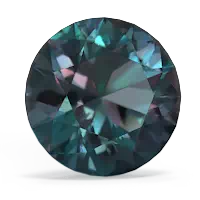


Wearing an aquamarine is said to help couples smooth out their differences and reawaken their love for each other making an aquamarine pendant the perfect anniversary present. Although a relatively new gem, alexandrite is said to bring pleasure and love. Wear a created alexandrite pendant to attract the man of your dreams. Tanzanite is the gem of fortune and luck. A tanzanite pendant is said to ease stress and free one from bad habits.